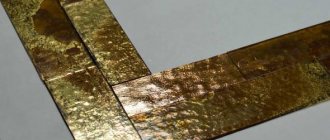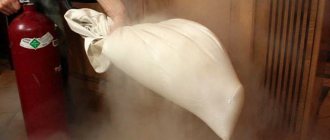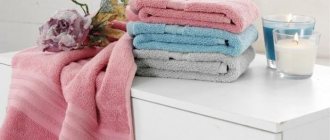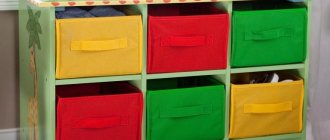Curtain tiebacks are an interior detail that adds zest to a room. Clips are used to create a unique design. They sell different types of curtain tiebacks. You can buy them in stores or make them yourself; the main thing is to know how to properly make curtain clips with your own hands so that they are beautiful and presentable. With this accessory, especially if you make it yourself, the room will look unusual, individual and interesting.
Types of tiebacks, clips and hairpins
Clamps are distinguished by their functions, material, and shape. Different curtains have their own curtain fasteners. You can often see tiebacks made from laces with tassels or other decorations at the end. Instead of a cord, chains of beads and ribbon are used. Smooth long curtains are decorated with neat ribbons without patterns, matching the shade with the fabric. Curtains with patterns require tiebacks similar to the curtain material.
Hairpins made of fabric, which on one side are the same color as the curtains, and on the other a shade that matches them or is harmonious but contrasting, look impressive. Tight tiebacks beautifully complement the lace fastenings, with loops and other decorative light details.
Clips in the form of large hairpins are additionally decorated with beads, seed beads, wicker elements, and flowers. Sometimes they choose tiebacks in the form of rings, which are attached to different sides of the window. These fasteners position the curtains beautifully, framing the window. There is also an option in the form of tape, which is used to cover the fabric and secure it to hooks in the wall.
Advice! Dense material or oilcloth is sewn to the inside of the scaffold so that it holds its shape well.
Curtains decorate the room, but you can also fold them beautifully and smooth out the folds on them. The clamps will do this. Such devices are made from fabrics, ribbons, and plastic.
Benefits of using curtain clips:
- By securing the curtains with tiebacks, they allow sunlight into the room and create beautiful, even folds.
- Clips automate the process of closing and opening curtains, eliminating multiple steps.
- The fabric is secured with tiebacks so that the room is well lit, or vice versa, so that the room remains twilight.
- To create new interior details and points to attract attention to the decor. Tiebacks are made from various materials and in any shape, so they find their own accessories for a specific style.
How to make a curtain tieback with your own hands, step-by-step instructions with photos and videos
Below we will describe several master classes on how to make decorations for curtains with your own hands. Some descriptions were compiled for experienced craftswomen, while others can be handled even by novice craftsmen. Design ideas depend only on your imagination.
Magnetic products
The convenience of magnetic curtain clips is that you do not need to drill additional holes in the wall. You can adjust the height and location of the grab bars as you wish.
To make magnetic pickups with your own hands, you will need:
- thin rope made of cotton, jute, silk;
- small magnet – 4 pcs.;
- decor of your choice. These can be rhinestones, sequins, beads, ribbons;
- glue gun
Please pay attention before choosing magnets. The lighter the curtains and the thinner the material connecting them, the smaller the magnets can be.
Work stages and description:
- Take a thin rope or ribbon. The length depends on the density of the fabric. The larger your curtains, the longer the potholder is needed. As a base that will connect the magnets, you can take the material left over after making the curtains.
- Assemble the magnets in pairs so that they connect rather than repel each other.
- Use a glue gun to attach the fabric to the magnets.
- The base of the holder is ready. You can use it as is or decorate it with decorative elements. Glue or sew buttons, bows, rhinestones.
From beads
The bead grabber is easy to make. To make it you will need beads that will match the material and texture of the curtains. You can buy ready-made sets at a fabric store or make jewelry.
Pickup materials:
- thin rope The material must be combined with the curtains;
- strong thread;
- transparent fishing line;
- beads.
Step-by-step master class:
- Secure the line at the beginning of the rope. Then small beads are strung on it. Wrap the fishing line around the entire rope. You can leave the scoop as is or continue decorating further.
- Cut 48-52 cm of thread. A bead is strung on it, which will be located at the base of the structure. Fold the thread in half. Tie or wrap the loose edges under the bead. One more bead is put on both parts. Twist the thread underneath. Repeat the process until you reach the desired length. Tie the remaining ends in a loop.
- Pass the rope through the loop. One pendant is ready. To make one pick-up, you need 4-6 such products.
There is an easier way. The hook can be a string of beads, both ends of which are attached to a wall hook. Before using jewelry, make sure that it is strong enough and will not tear under the weight of the curtain.
Made from macrame cord
You can not only decorate ropes, but also weave patterns from them. Knitting a curtain tieback is a common way to decorate a room.
To knit tiebacks using cord macrame technique, you need the following materials:
- rope made of jute or cotton, flax;
- to pick up you will need 16 ropes of 2.4-2.6 meters each. The pattern can be monochromatic or of matching shades;
- foam pad.
Stages of work:
- Knitted curtain tiebacks are made using flat weave. Fold the ropes in half and attach to the foam. Make 5 knots of 5 ropes to the left. Unfold the pillow and continue weaving in the opposite direction.
- Fold the knots to form a loop. If you use different shades of ropes, then the threads that you have already used should be hidden in the center of the composition. The free edges of cords of unused color are used to form fixing knots. You will need six ropes.
- All ropes are divided into 3 groups. Flat knots are woven from each group. Two of them consist of 6 ropes, and one of 4. After that, they are combined and secured with two knots. This is how the links of the chain are formed.
- Weave until you reach the desired size. To secure it at the end, you need 2 flat knots, and a brush is formed from the free edge. A detailed knitting pattern is given below.
When using this technique, you can take any number of cuts. The volume of the curtain clip will depend on this. Maintain proportions when weaving. A knitted tieback will be a successful accessory for curtains in a classic design.
From hard drive
A CD you don't need can become part of your interior design. The discs are used to make clips or rings for securing curtains.
You need materials such as:
- 3-4 discs. Take a few extra to stuff your hand when cutting;
- rope. Material at your discretion: leather, linen, satin;
- strong glue.
Manufacturing stages:
- You need to cut the disk in such a way that only the outer part of the circle, 1.5-2.0 cm thick, remains. Using a heated knife this will be faster and more accurate.
- Wrap the circle with the chosen material. Secure the edges with glue. You can use decorations that match the style of the curtains. The clip-back is attached to the curtain using a pin, which should be designed in the same way as the main part. Or thread the curtain through the tieback.
From fabric
The discreet classic will be successfully complemented by a fabric grip. Their shape may be different. The curtain will be gathered in even folds.
Grip Materials:
- cardboard;
- pick-up material;
- threads;
- adhesive woven pad. For example, doublerin;
- thin ribbons.
The finished product is fixed on a wall hook.
How to sew tiebacks from fabric:
- To calculate the length of the fabric for gripping, you need to divide the width of one curtain in half.
- The sections from which the curtain holders will be sewn must be folded in half. Each product requires a front part, a back part and a duplerin base.
- A pattern of the required size is cut out of cardboard.
- Cut out blanks from the material. Take into account allowances of 10-15 mm. Dublerin is cut 1:1 according to the pattern.
- The doublerin is connected to the front part. Allowances are ironed using an iron. After this, sew on the part that will be inside the scoop.
- A folded ribbon is sewn along the edges of the grip. The length should be a few centimeters longer than the grip. Tie the remaining edges around the wall hook.
Kanzashi technique
The delicate floral technique was used to make hairpins and headbands. Now you can find elements of such creativity in the interior.
To decorate curtains with voluminous flowers, you will need:
- satin ribbons;
- pieces of chiffon or lace;
- beads.
Manufacturing steps: For the grip you will need a base. It can be made of textile, plastic, wood or metal chain.
Flowers are made as follows:
- textiles are cut into squares. For example, the size can be 4*4 cm, 6*6 cm;
- In order for the material to retain its original appearance, the edges must be burned;
- fold the squares according to the pattern and secure with thread;
- make a flower from satin ribbons using threads or glue. The core can be decorated with beads.
Fairy Tiebacks
Children's rooms also need beautiful accessories. These can be dolls, bears, cats, fairy-tale characters. Fairy tiebacks are suitable for decorating a girl’s room. This is also a magnetic curtain holder.
You will need:
- cardboard for patterns;
- thin textiles of light color. Beige or ivory will do;
- silk, lace, chiffon;
- silk ribbons;
- cotton or padding polyester filler;
- embroidery threads;
- beads, buttons;
- fixing magnets.
How to sew a fairy with your own hands master class:
Trace the pattern onto the fabric, taking into account 3-4 mm for the seams. All parts are cut out in quantities multiplied by two.
The blanks are sewn together with a fine seam “over the edge”. Turn right side out and stuff with filling. To join filled pieces, use a blind stitch.
Use embroidery thread to shape the facial features and hair.
Make a dress for the doll from silk and lace. Chiffon is used to make wings. Use a thin ribbon to form the shoes.
Magnets need to be glued to the doll's hands. This way the fairy will hug and hold the curtains. If the fabric is voluminous, then you will need 2 dolls on one side of the curtains.
In the photo you can see the pickup that we describe in the master class.
You can also make tiebacks using the amigurumi technique for a children's room. The main tool for making is a hook. A bear, a sheep, a bunny, a cat and other characters are suitable for a boy’s and a girl’s room.
How to make a fabric clip pattern
You can make fabric curtain clips yourself; it’s not difficult and you don’t have to use store-bought products. For this, a pattern is prepared. To ensure everything works out right the first time, you need to follow the instructions:
- Cut a piece of material so that it is 25-30 cm wide. The resulting piece is folded in half lengthwise.
- Measure the width of the product from the fold line and mark the area with a piece of soap or chalk. Exactly half of this length is allocated.
- A segment is marked from the edge, which is 2-3 cm less than the width. A section of fabric equal to 27-28 cm is laid at the bottom of the product. This pattern is cut out and then unfolded. To strengthen the product, they hem oilcloth or other dense material, which is cut according to the same pattern.
Pickup attachment
The location of decorative elements plays a huge role. Not only the degree of illumination of the room, but also the harmony of the interior depends on it.
There are three possible options for mounting the holders:
- flush with the window sill (with vertical division in equal parts);
- below the window sill (the vertical is divided in a ratio of 2:1);
- above the window sill (ratio of top and bottom 1:2).
The values in brackets apply to panoramic windows or doorways.
Let's consider each option.
Placing the tiebacks at the same level as the window sill is the most common fastening method. The division of the vertical plane into two equal parts looks organic and does not hide the size of the windows. This position of the holders is good for children's rooms, bedrooms and living rooms.
Placing a decorative element slightly above the window sill divides the window opening into upper and lower parts in a ratio of 1:2. This method is great for kitchens and rooms with narrow windows, visually widening the opening and providing fairly good illumination. But there is one caveat: this option is absolutely not suitable for heavy curtains.
Fastening the holders below the level of the window sill harmonizes overly wide windows, visually narrowing them. Although this means that some of the natural light in the room is lost. This method is best suited for heavy drapes or multi-layered curtains.
Where to attach hairpins and tiebacks
The main rule when attaching clamps and clamps is to arrange them symmetrically. To avoid mistakes, apply tape to the intended location and see if the look suits you. Take into account the length of the curtains, drapes, window height and distance from the floor to the window sill. Even furniture and fabric patterns, wallpaper colors and other decorative elements influence the position of the clamps. The hairpins are attached at a distance of 2/3 from the ceiling. On a curtain that reaches the floor, tiebacks are placed approximately a meter from the bottom. This length is changed depending on the pattern on the curtains or other parts of the decor that they want to leave more visible.
Chic and safety
An interior detail in the color of a powdery rose will attract everyone's attention with its unusual appearance. To create unique accessories, you need to use imagination and a simple set of materials. Most of which are present in any home.
Curtain ties for the kitchen
The kitchen often lacks coziness. To make the room more comfortable, curtains and barrettes help. These clips are made by hand from textile fabric. Cut a rectangle 20 cm long and 15 cm wide. This cut will be used for the loop. Then visually mark the middle of the fabric and fold it in two parts inward. Then fold the piece so that the edges are on the inside. The product is stitched along the edge. There are enough loops to make enough for hooks. Afterwards, half a meter of textile 40-50 cm wide is cut off. It is folded and stitched in the same way.
The edges are folded inward, and a loop folded in half is inserted into one end. The second loop is also inserted into the other edge. Then the ends of the product are stitched and decorated. For decoration, use buttons, flowers, and beads. Secure the grab onto a hook screwed into the wall.
DIY curtain holders
After sewing curtains, there is often fabric left over. You can use it to make a textile tieback for decorating curtains. Satin, organza, burlap can become the basis for the pick-up.
Description of the procedure for sewing ties
Materials for production:
- textiles for ties – 50 cm. The color either matches the curtains or is contrasting;
- chalk;
- centimeter;
- ruler.
We sew ties with our own hands:
To determine the length, fix the curtain with your hands. Using a tape measure, measure the full circumference, taking into account the distance to the wall mount.
For allowances, add 2 cm to the length and width.
You need 2 cut out blanks for grabs. To cut out your fabric, use chalk and a ruler to draw a rectangle and cut it out.
Fold the piece in half and sew the pieces on both sides.
Turn the tie back out and connect the parts with a hidden seam. Attach textile loops to the edges of the grip. A ring that can be bought at a textile store is also suitable.
Clamps for other rooms
Depending on the purpose of the room, the following options can be distinguished:
- Clips for children's room. Cute naive tiebacks are created for curtains in a child’s room. You can buy them in stores or make them yourself. Curtain clips made from toys look funny. You can make an unusual clamp yourself using any standard clamp. Together with the child, he is decorated with toy figures and fabric cutouts. In craft stores they take beautiful butterflies and sew them onto tiebacks.
- Tiebacks for the bedroom. For light, neat curtains, clips with magnets are used. You can buy the base in a store or make it yourself from wide tape. It is folded in half lengthwise and the edges are sewn. Magnets are glued inside, a curtain is wrapped with a clamp and the edges are fastened. You can decorate magnets with halves of beads. You can also glue a magnet to the wall to secure the clamp in one position.
- Tiebacks for the living room. To decorate the living room, use all your imagination, because different styles are suitable for this room. This increases the choice of curtain tiebacks. Clips are made independently from laces, fabric, leather belts and even metal. They are decorated with beads, crafts made of fabric, and plastic. Fabric tiebacks are made in one color or with an ornament. Choose from both simple and complex hairpin designs. The main thing is that the clips are in harmony with the interior of the room.
On a note! On New Year's holidays, you can attach Christmas tree balls, tinsel, figurines of Santa Claus, Snowmen, and any other light holiday paraphernalia to the clips.
General recommendations
When choosing a clip or tieback for curtains, you don’t have to go to the store and look for a branded part. Such a purchase will not be able to diversify the atmosphere in an original and interesting way.
It’s better to do the decor yourself, because even photos of similar interiors show that this approach is beneficial. In this matter, you should not hold back your imagination, because even the most standard elements can become an interesting addition to the curtains in the room.
Curtains are an important interior detail. They are able to decorate any
One of the simple, but at the same time original ways of decorating
Various designs are used to decorate the interior design.
Unusual clips and pins for curtains
Stores sell pins and curtain ties in large quantities, but they are not anything special. To attach an original tieback to the curtains, make it yourself.
- Tie grab. This unusual product is suitable for an office, study room or a schoolchild's room. To create this holder, you need a tie and double-sided adhesive tape. The tie is tied with a Windsor knot and a ribbon is glued to the back. Another piece of tape is attached to the wall, and then the curtain is pulled into the tie and glued to both sides of the tape. It is acceptable to use an old belt instead of a tie. It is sewn in the right places, the excess parts are cut off and a curtain is threaded into it.
- Clip made from utensils. This tieback looks stylish in a rustic kitchen, dining room or patio. The cup is better for clamping because it is easy to work with. Bring a tile drill for the job. The bottom of the cup is removed with a drill. To do this, draw a circle with a marker and seal it with tape. Before starting, check the cup to make sure there are no cracks. After pulling the bottom into the cup, pull the curtain through and hang it by the handle on a hook attached to the wall.
- Toy grip. This idea is implemented in children's rooms. For the first option, take two identical toys and sew them together with paws. A curtain is inserted into the opening between them and attached to the wall at the back. For the second option, choose a toy with long legs. The legs are sewn together and the curtain is threaded using the same principle.
- Necklace clip. A necklace holder is an elegant decor for a living room or bedroom. To do this you will need wire of different thicknesses, beads, seed beads or other decorations. Thick wire is wound into a ring. You can wrap it with a beautiful ribbon, or you can leave it just like that. Beads and seed beads are strung on a thin wire and then attached to a thick frame. They do this for several rows, and then thread the curtain into the ring and attach it to the hook at the back.
- Rope-rope. For heavy massive curtains, a large tie made of thick rope or rope is suitable. You can use it to wrap a curtain or make a ring by sewing the ends together. The main thing is to secure the bracket to the wall so that it does not slide down.
- Door handle. To do this, use a handle of an interesting design that matches the curtains. It is screwed to the wall so that the fabric can be tucked behind it. This is suitable for vintage or palace style interiors.
- Flower pick-up. In the store they buy any clamp to which flowers are sewn. They are bought in stores for decoration or handicrafts. But they also make them themselves. These clips add sophistication, sophistication and grace to the room.
Ideas for inspiration
There are many more options for making curtain tiebacks than one article can cover. For this purpose, the most unexpected materials and various technologies are used, allowing you to make exclusive accessories with your own hands, which not only add convenience to everyday life, but also please the eye.
This option looks good on folk style curtains
Wrapping this accessory with thread in the color of the curtain connects them into a single composition
This decor looks good on thick curtain fabric
The contrast of thin fabric and natural dense thread looks impressive
This version of the product will fit perfectly into the interior of the kitchen.
Metal, stones and key - a good combination
Looks simple and cute on thick fabric
Sometimes curtains are held up by unusual objects such as ties or belts. The straps can be shortened if necessary and attached to the wall. Or they simply pull the curtain together, like ties.
This option is at least very original
The pattern here must either exactly match or be on one of the elements - a combination of two different textures is undesirable
In children's rooms, you can decorate the curtains not only with fairies, but also with other toys.
The gentle colors and themes of bear cubs and honey look very positive
One such large and bright initial will convey to the child a warm attitude from the parents
This way the child will unconsciously learn to respect nature.
Tiebacks in marine or eco-style look interesting.
A mosaic knot tied on it will add interest to the composition.
This accessory looks very beautiful precisely due to the combination of colors of the same range and the naturalness of the materials of the entire composition.
Are you refurbishing your kitchen? Then you might find this article about choosing curtains useful: https://mydesigninfo.ru/dizajn-shtor-dlya-kuxni-originalnyie-variantyi-i-novinki/.
Curtain tiebacks are an important element of window design. They hold the curtains, which allows light to enter the room, and also visually adjust the shape of the window and complete its appearance. Plus, making them with your own hands is easy. For this purpose, available materials are used: fabric, ribbons, ropes, beads, etc. Such products will give the room comfort and individuality, and their options are limited only by your imagination.
- Author: Pat
Rate this article:
- 5
- 4
- 3
- 2
- 1
(10 votes, average: 4 out of 5)
Share with your friends!
How to make clamps from disks
Disc clips look good on curtains and are easy to make yourself. To work you will need:
- unused computer CD;
- wide ribbons matching the color of the curtains;
- fabric roses, buy them or make them yourself;
- a pair of scissors;
- threads
To make a pick-up do the following:
- The middle of the disk is removed, leaving a ring 3-4 cm wide.
- The disk is wrapped with tape.
- The remaining edges of the tape are sewn together so that the junction remains invisible.
- Fabric flowers are sewn to the ring and the seams are masked with them.
- To clamp the fabric, use an unnecessary knitting needle. It is separated, wrapped with tape and attached to the disk.
Attention! These clips are used only for thin curtain fabrics; they will look out of place on thick curtains.
Experts recommend
When choosing a grab or clamp, it is not at all necessary to look for them in specialized retail outlets. Such an acquisition can pleasantly surprise and diversify the usual interior, introducing something new into it.
However, if there is no money, and the desire to change the usual design is off the charts, take everything into your own hands and start making the clips yourself.
Share “How to make curtain clips with your own hands”
Polymorphus “Orchid” clip
The curtain clip is made from a new material that hardens. This material is called polymorphus. It is easy to work with, so the process will be fun. You can use this material to make a clip-on orchid. To do this, boil water and pour it into a container. Then polymorphus granules are poured there. They quickly become transparent, like plastic. A flower is sculpted from this plastic. First the core is made, and then the petals. Roll it out in your palms. This material is similar to plasticine; they work with it in the same way. The made flower quickly hardens, and after that it is painted with acrylic. The base of the orchid is glued to the holder and the decoration is covered with transparent nail polish.
You can make clothespins for curtains with your own hands even without drawing or sewing skills. If you can’t make a clamp yourself, find different master classes on the Internet and follow the step-by-step descriptions. Several unsuccessful attempts are not a reason to abandon the idea. They make grabs from different materials. The choice of fabric depends on the curtains, the pattern on them, and density. You can select a suitable clip for any curtains and make it in accordance with detailed instructions.
How do you like the article?
Utensils as a clamp
Do you want to transform your home interior into something original, new and unique? – Start with curtains, or rather with curtain clips. If you have a lot of unnecessary utensils in your kitchen, use cups other than their direct functional purpose. Making such a clamp will not be difficult, and all the work can be done with your own hands, provided you have a drill for tiles.
With its help, holes can be easily made in ceramic products. The photo below shows just such an original solution for curtains. You should be careful when choosing a cup. Its structure must be complete, without a hint of chips or cracks.
It is optimal if the handle is cast, which is extremely important for holding dense matter.
To create such beauty, you need to drill a hole in the bottom of the cup. This is very simple to do: trace the line of the intended cut with a marker and cover it with tape, which will eliminate the risk of chipping or any other defects on the surface of the dishes. Work only with gloves and safety glasses. Immediately after removing the bottom, thread the curtain and hang the clip on the wall, placing it on the hook.
“In the kitchen, it is common to use old appliances as decorative decorations, including for curtains. It is not surprising that spoons and forks are increasingly used as grabs. Experts simply bend the products in half with their own hands and tuck the curtains into the clip.”
Choosing the right clothespins for curtains
The range of curtain clips is huge and exceptional. Therefore, in order to correctly and tastefully select the necessary accessories, you should take into account the type of textile design and interior features.
Namely:
- Light curtains must be secured with invisible and airy tucks;
- Select the color and shape of the clamps to match the interior of the room.
Curtain tiebacks in the interior (video)
Curtain clips keep up with your curtains and are a great accessory. The functionality of the tucks increases each time, thanks to which unique and useful compositions are created on the windows. Dramatic changes to the window will bring unusualness and fun to the room. All you need is your imagination.
Curtain clips in different styles
Curtain clips are not only a beautiful decorative item, they usually also have a practical function. In sunny weather, when there is no need to cover the window with curtains, the clips will come in handy. Thanks to them, the curtains will be neatly assembled, thereby creating an aesthetically attractive look for the window and the interior as a whole.
Like the textiles themselves, accessories for them must match the style of the interior. In classic rooms it is better to use decorations made of wood, metal or leather. Clips in the form of tassels with a fringe made of thick golden or silver thread will also look good.
In modern high-tech interiors, you can use decor for curtains made of transparent plastic or chromed metal with a matte or glossy surface. It is better if the clips externally match other elements of the furniture.
Functions of clothespins for curtains
Curtain clips have great functionality. In addition to decorating a room, fittings can be used to regulate the flow of sunlight or hide small nuances of an old window.
Using clips, you can create interesting folds on curtains and curtains, which will serve as an excellent window and room decor. It is important to adhere to the interior style when creating compositions.
To hide the imperfections of the window, clothespins should be attached parallel to the window sill. This lift provides a high level of light penetration, and the fabric is formed in the form of graceful folds, which gives comfort and coziness to the room. For narrow windows, the most suitable pick-up is made closer to the ceiling. This design of curtains will visually help to enlarge the window opening and give the curtains a chic and elegant look.
If you have several types of curtain clips, you can quickly and easily change the look of the window by attaching clips of a different shape or adjust the length of the curtains to the desired height. A few steps taken and the window decor will become intricate, attractive and original.
Magnetic clips for curtains (video)
Clothes pins for curtains and their varieties
It is necessary to select fastenings taking into account the characteristics of the curtains and the interior, because each type of clamp has its own advantages and disadvantages in use.
There are several main types of clamps:
- Metal. From ancient times to the present day, metal clips-clothespins have been the most popular. Such tucks can be used for decades. Despite their not particularly charming appearance, metal clips attract apartment owners due to their affordability and compatibility with many curtains. But metal also has its drawbacks. A small disadvantage of such clothespins is that they leave marks on the curtains, which are not so easy to remove. And it’s even worse when unpleasant rust from the metal appears on the snow-white curtains.
- Magnetic. Metal tucks are being replaced by modern magnetic tucks. In appearance, such clamps are the most attractive, and in reliability they are not inferior to those described above. Magnetic curtain clips can transform any room because... the variety of figures and objects is quite wide. The color and design of the products can be matched to any interior or shades of curtains. The main function of such tucks is to connect two parts of curtains or curtains in the center. The curtains are fastened using magnets located on opposite sides of the cord.
- Plastic. Plastic clips are not inferior in demand, but have low practicality and functionality. Due to the wide range of colors and low cost, plastic tucks are popular for small and light curtains. Due to its fragility, plastic cannot withstand heavy curtains.
- Decorative. Curtain clips can also implement other functions, such as curtain pins. Usually this method is chosen to add sophistication and beauty to the interior. But hairpins must be chosen correctly and tastefully. So, with bright curtains or with a variegated pattern, the accessory should be neutral and calm shades to avoid bad taste.











